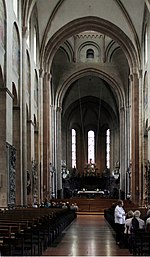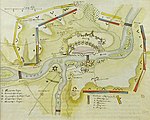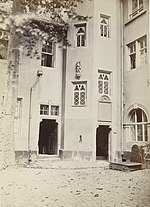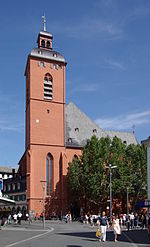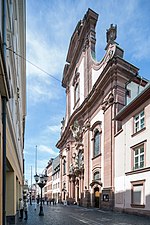St. John's Church, Mainz
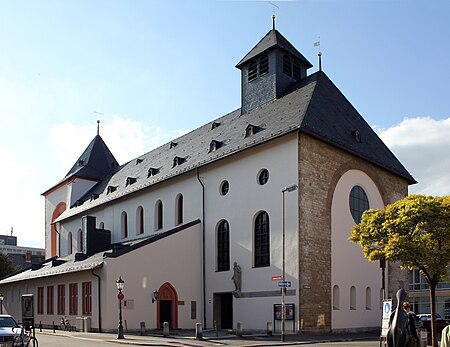
St. John's Church (in German Johanniskirche) is located beneath Mainz Cathedral in the historical center of Mainz, Germany. This 1100-year-old church was the first episcopal see of the Bishop of Mainz. It is the oldest church in Mainz, the oldest cathedral in the Germany of today and the only preserved cathedral building from late Carolingian and early Ottonian time in Germany.St. John's Church is predominantly Carolingian in style, but later exterior additions over many centuries have resulted in the appearance of various architectural influences seen today. It comprises three naves and stands under the patronage of John the Baptist today. It can be assumed that the church was dedicated initially to Martin of Tours since Martin is the Patron saint of the Roman Catholic Diocese of Mainz, then to St. Salvator, consecrated in 911 by Archbishop Hatto I and served as the cathedral for the Bishop of Mainz until the appointment of Willigis as Archbishop of Mainz in 975. It is documented that archbishop Erkanbald was buried in this first cathedral. In 2019, a sarcophagus was opened to gain more information on the early history of the diocese of Mainz. Whether it concerns the remains of cleric Erkanbald, buried in 1021, is investigated since then said research director Guido Faccani.
Excerpt from the Wikipedia article St. John's Church, Mainz (License: CC BY-SA 3.0, Authors, Images).St. John's Church, Mainz
Johannisstraße, Mainz Altstadt
Geographical coordinates (GPS) Address Website External links Nearby Places Show on map
Geographical coordinates (GPS)
| Latitude | Longitude |
|---|---|
| N 49.9983 ° | E 8.2722 ° |
Address
St. Johannis (Johanniskirche / Aldeduom (Alter Dom))
Johannisstraße
55116 Mainz, Altstadt
Rhineland-Palatinate, Germany
Open on Google Maps



